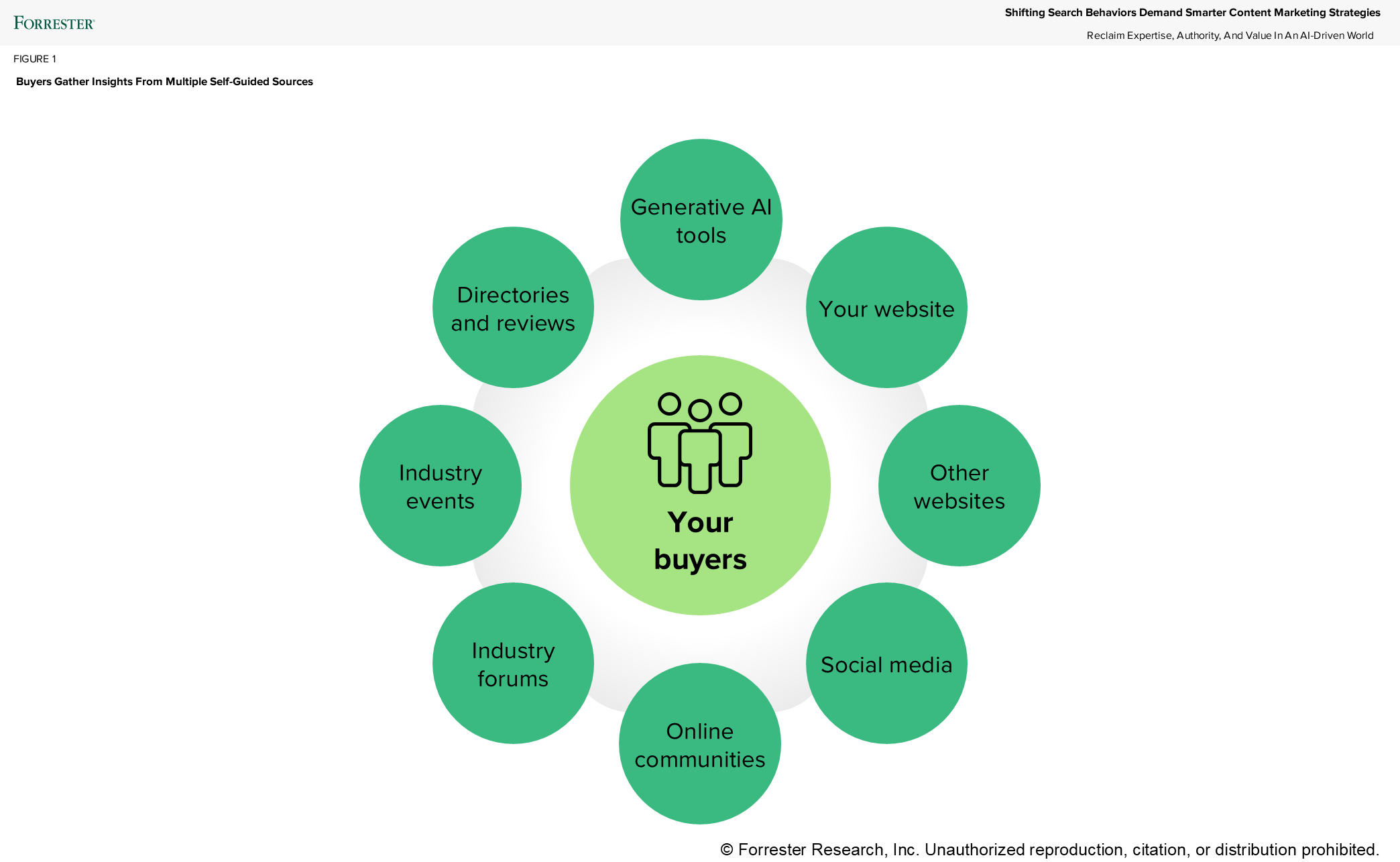Shifting Search Behaviors Demand Smarter Content Strategies
B2B marketing leaders face a harsh reality: Buyers aren’t searching for information the way they used to, but most marketing teams are optimizing as if they are. Even as organic traffic declines, many teams continue to rely on outdated digital marketing playbooks to plan, publish, and measure content. These habits are hard to break. They’re reinforced by legacy KPIs, familiar workflows, and pressure to show immediate results. Marketers still chase keyword rankings, obsess about page views, and anchor reporting in click-based behaviors, even as generative AI (genAI) redefines how search works and how buyers discover and trust information.
Your Buyers’ Search Behavior Has Changed
Search used to be straightforward: A buyer typed in a query, scanned a results page, and clicked through to vendor content. But that linear search-to-click path is done. Today, buyers ask questions in natural language and get instant, AI-curated answers. According to Forrester’s Buyers’ Journey Survey, 2024, 89% of B2B buyers say they’re using genAI tools at every stage of the purchase process. They consult genAI tools such as Perplexity, ChatGPT, Claude, or Gemini, often on mobile devices or embedded in enterprise software, to accelerate how they learn and evaluate solutions. They gather insights from multiple self-guided sources, including genAI tools, vendor websites, social media platforms, user review websites, industry events, and industry or business association websites.

The Risks Of Sticking With An Outdated Content Strategy
Holding on to yesterday’s content strategy doesn’t just slow you down. It actively undermines your visibility, credibility, and influence with modern B2B buyers because even high-quality content is getting filtered, summarized, or skipped entirely. Here’s what’s at stake:
- You’ll lose visibility where it matters most. Search is no longer about pages and rankings. Instead, it requires presence in AI-curated responses. If your content isn’t crawlable or structured in a way that AI systems can interpret, you’re not in the conversation. Outdated SEO tactics such as keyword stuffing, backlink chasing, or producing thin “thought leadership” don’t work when large language models and AI search tools prioritize content that’s well structured, contextually relevant, and authoritative.
- You’ll miss the chance to demonstrate expertise. If your content lacks depth, nuance, or proof of expertise, it gets filtered out or flattened into generic responses. That means your unique point of view gets lost, a missed opportunity to educate buyers, differentiate your brand, and establish credibility.
- You’ll stay out of sync with buyer expectations. Today’s buyers are more informed and skeptical than ever. They expect content that helps them understand complex problems, compare solutions, and build internal consensus. A content strategy built only to support lead capture and gated assets is out of step with how modern buyers evaluate solutions. It creates friction in the buying process, costing you visibility, slowing pipeline, and putting revenue at risk.
Content Visibility Has New Rules And Higher Stakes
Today’s buyers are gathering insights in more places before they reach your site. To stay visible and credible, your content must meet them where they are, earn their trust quickly, and reflect the depth of expertise that they expect. This means moving beyond keywords and building content around buyer intent, clear answers, and proof of authority. Every asset should reinforce your relevance and readiness — because if your content isn’t built to be recognized by AI and respected by buyers, it won’t show up where decisions are made.
Read more about how to do this in the report, Shifting Search Behaviors Demand Smarter Content Marketing Strategies (client access required). Contact us if you’d like to discuss how to evolve your content strategy to meet buyers’ expectations and be visible wherever they are.
